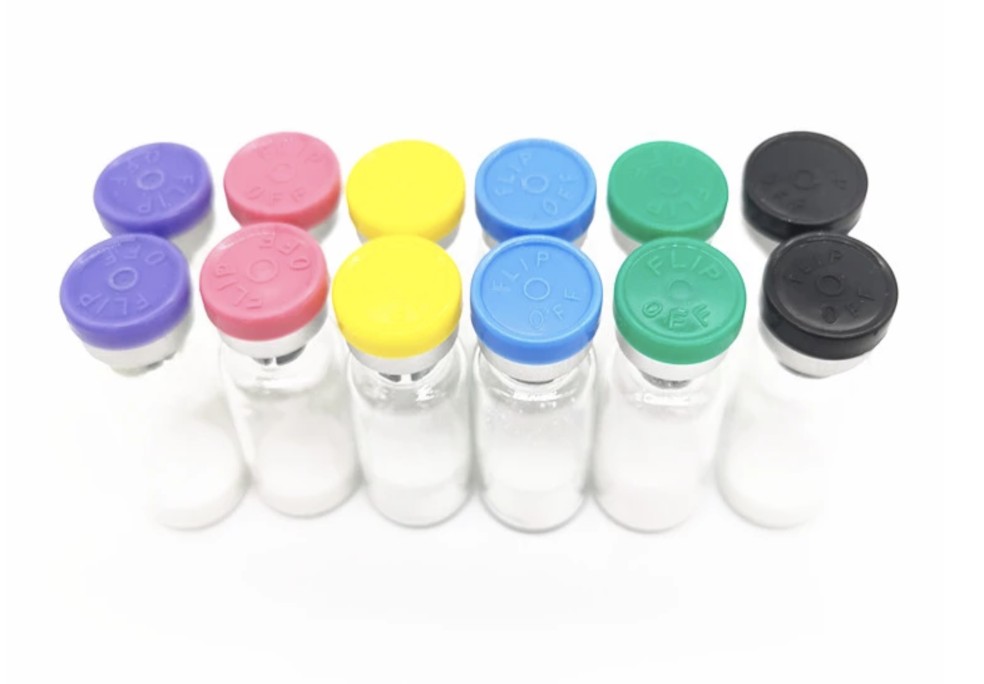бівалірудин
Послідовність:D-Phe-Pro-Arg-Pro-Gly-Gly-Gly-Gly-Asn-Gly-Asp-Phe-Glu-Glu-Ile-Pro-Glu-Glu-Tyr-Leu-OH
Псевдонім:126:ПН:WO2004076484СТОР:31 заявлений білок;Ангіомакс;BG 8967;бівалірудин;Гірулог; Гірулог 1
Cas No.: 128270-60-0
Молекулярна формула: C98H138N24O33
Молекулярна маса: 2180.29
Чистота (ВЕРХ): 98.0%хв.
Зовнішній вигляд: Білий порошок
Одна домішка (ВЕРХ): 1.0%макс
Амінокислотний склад: ±10% від теоретичного
Вміст пептидів (N%): >80.0%
Вміст води (Карл Фішер): <8.0%
Вміст трифторацетату(HPIC): >12.0%
РС (ESI): Послідовний
Баланс маси: 95.0~105,0%
Оцінка : Фармацевтичний клас
Зберігання: ЗАЧИНЕНО, нижче 2 ~ 8℃ збереження
Використання : Цей продукт в основному використовується для профілактики судиноутворюючої інтервенційної терапії при лікуванні нестабільної стенокардії, ішемічні ускладнення до та після. Він пригнічує як циркулюючий, так і зв’язаний згустком тромбін, одночасно пригнічуючи опосередковану тромбіном активацію та агрегацію тромбоцитів.
бівалірудин (Angiomax or Angiox, manufactured by The Medicines Company) is a specific and reversible direct thrombin inhibitor (DTI).
Bivalirudin is a DTI that overcomes many limitations seen with indirect thrombin inhibitors, such as heparin. Bivalirudin is a short, synthetic peptide that is potent, highly specific, and a reversible inhibitor of thrombin. It inhibits both circulating and clot-bound thrombin, одночасно пригнічуючи опосередковану тромбіном активацію та агрегацію тромбоцитів. Bivalirudin has a quick onset of action and a short half-life. It does not bind to plasma proteins (other than thrombin) or to red blood cells. Therefore it has a predictable antithrombotic response. There is no risk for Heparin Induced Thrombocytopenia/Heparin Induced Thrombosis-Thrombocytopenia Syndrome (HIT/HITTS). It does not require a binding cofactor such as antithrombin and does not activate platelets. These characteristics make bivalirudin an ideal alternative to heparin.
Bivalirudin clinical studies demonstrated consistent positive outcomes in patients with stable angina, unstable angina (UA), non-ST segment elevation myocardial infarction (NSTEMI), and ST-segment elevation myocardial infarction (STEMI) undergoing PCI in 7 major randomized trials
Bivalirudin is indicated for use as an anticoagulant in patients with unstable angina undergoing percutaneous transluminal coronary angioplasty (PTCA).
Bivalirudin with provisional use of glycoprotein IIb/IIIa inhibitor (GPI) is indicated for use as an anticoagulant in patients undergoing percutaneous coronary intervention (PCI).
Bivalirudin is indicated for patients with, or at risk of HIT/HITTS undergoing PCI.
Bivalirudin is intended for use with aspirin and has been studied only in patients receiving concomitant aspirin.






















